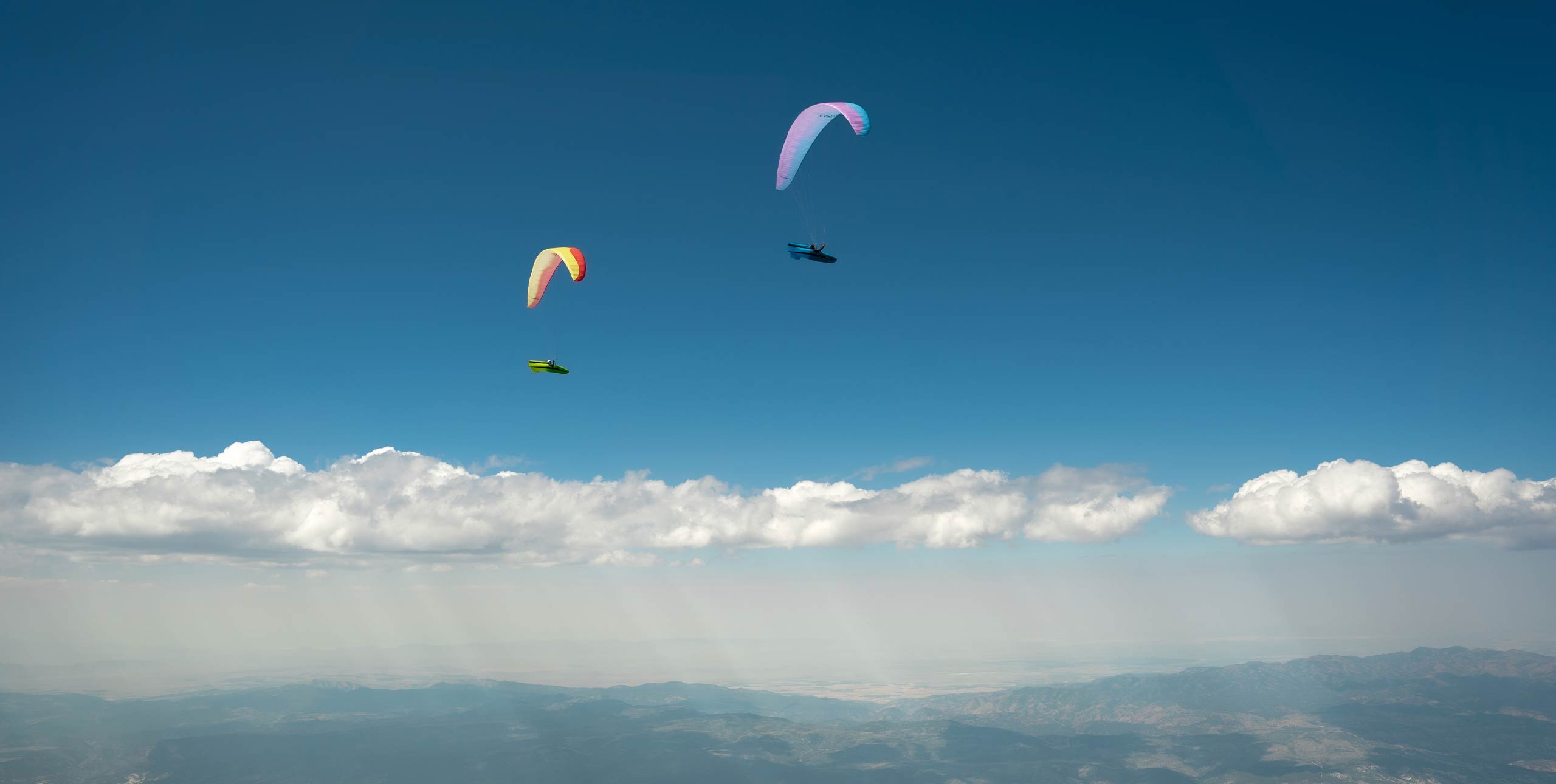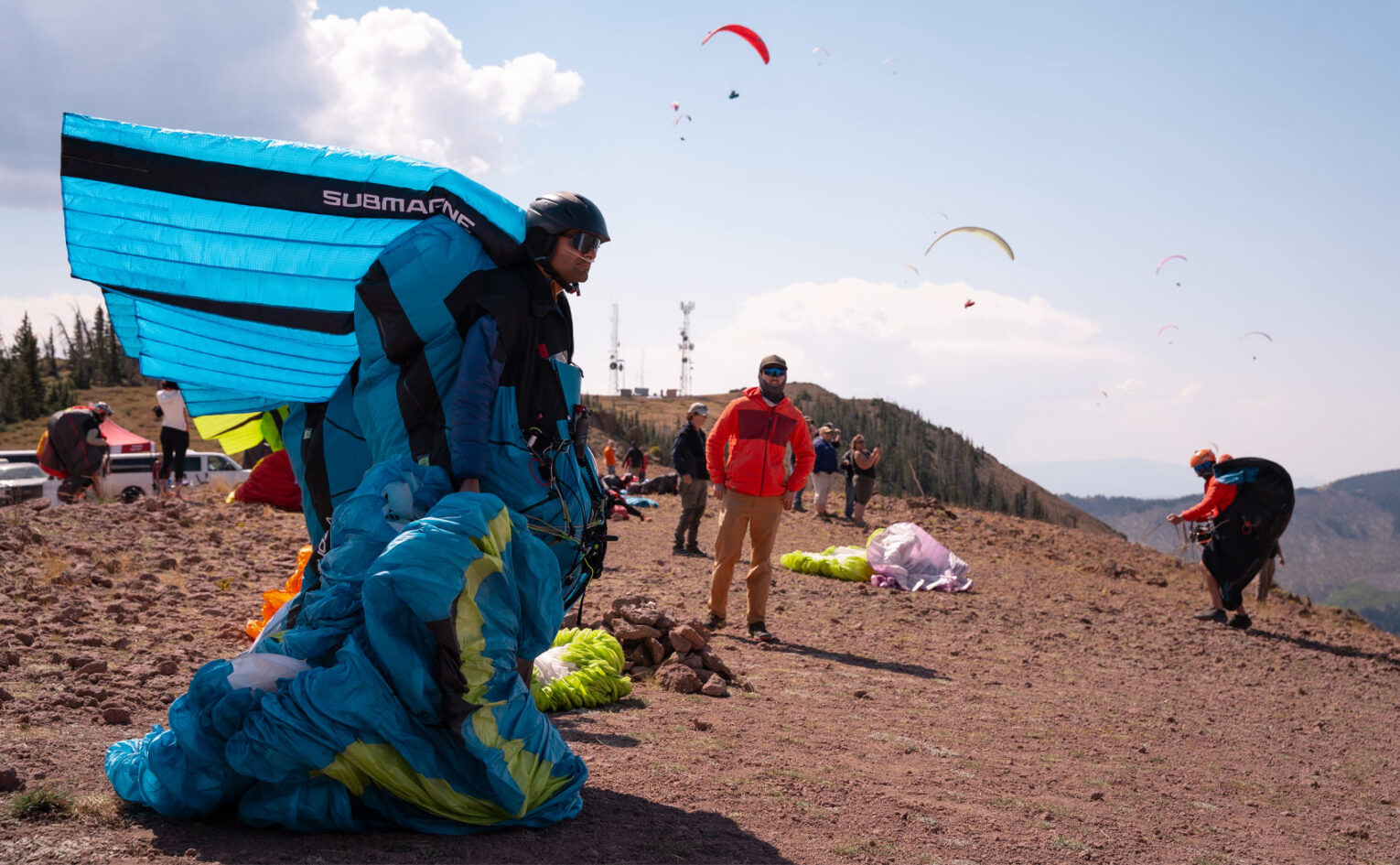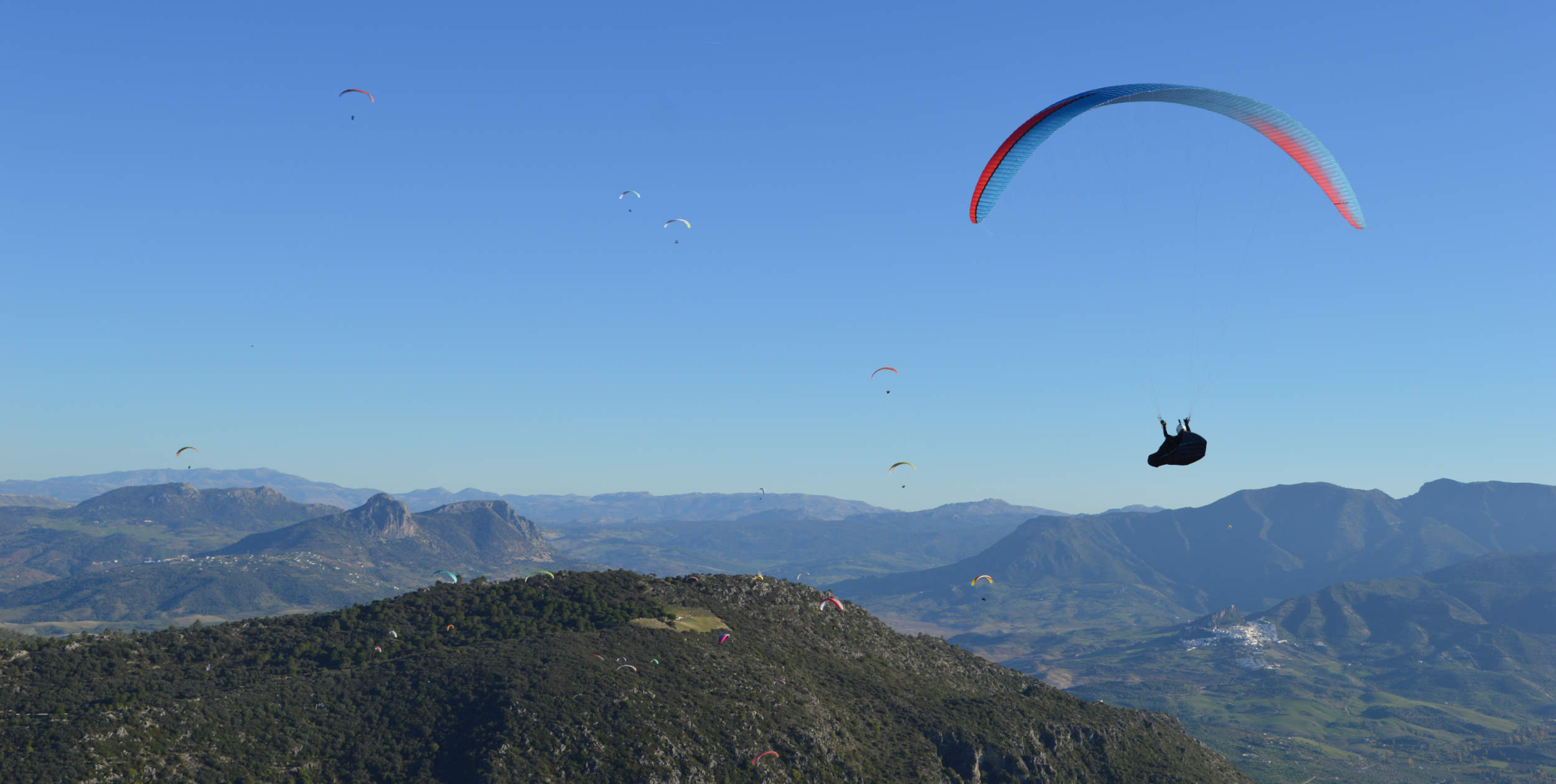
Storms halt tasks as World Cup gets underway
11 September, 2024, by Tarquin Cooper Photos: PWCAPilots are encountering ‘exhilarating and daunting’ skies in central Utah as the Paragliding World Cup Monroe kicks off, with the first two tasks cut short after an hour due to bad weather.
The region is known for having the most reliable flying weather in the Intermountain West, but at registration pilots got a foretaste of what was to come with an extremely high cloudbase and strong turbulent conditions dominating the skies. They were also warned about local hazards, including rattlesnakes, scorpions, and bears, adding an extra layer of interest for anyone bombing out.
The first task saw competitors tasked with navigating a 107km straight-line flight toward Salt Lake City, designed to steer pilots away from developing storms. However, even before the race began, ominous clouds in some areas started to produce rain, foreshadowing what was to come.
As the race got underway, the lead gaggle progressed smoothly along the course. However, those flying farther back began to feel the effects of the overdevelopment, encountering gusty winds and increasingly turbulent conditions. In the interest of safety, the race organisers decided to stop the race after over an hour of competition.

“The first task proved to be as much a test of mental resilience as flying skill,” PWCA organisers said. “With weather conditions proving to be both exhilarating and daunting, the day set a challenging tone for the event.”
Hopes of a second task the following day were dashed as even stronger storms dominated the skies over Monroe. While organisers had initially considered a late-afternoon task, the persistent stormy weather forced the cancellation of the day’s flying altogether.
The second task on 10 September was also similarly cut short, with the lead pilots only able to cover 53km. After two tasks Estefano Salgado (MEX) lead the rankings but little separated him from Balazs Vertes (HUN) and Tim Rochas (SUI), with the US pilots Mitch Riley and Bill Belcourt not far behind. Violeta Jimenez (USA) lead the female table, with German pilot Elisa Deutschmann ranked second and Lynsey Haynes (USA) third.
With four more days, there’s a lot that could still happen. Central Utah is a popular flying area noted for its huge XC potential with several 300km flights having been made from Monroe. The competition is being held in September when overdevelopment theoretically becomes less of an issue and the days are still long with high cross-country potential. Besides the more intimidating wildlife, the region is also noted for its stunning fall colours at this time of year.











